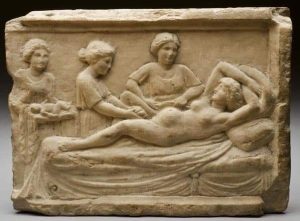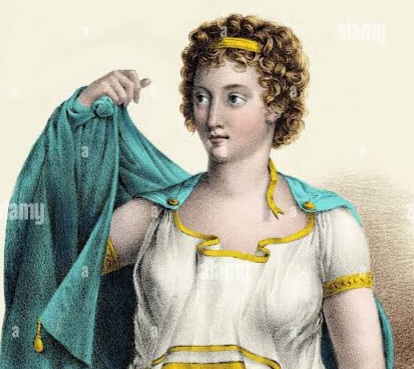“At her trial, Agnodice, mistaken for a male Doctor, stood before the court and proved that she was a woman but this time, she must die for violating law that criminalised studying and practicing medicine for all women”
Agnodice or Agnodike is a legendary figure credited as the first female midwife or physician in ancient Athens. Her story is told by the Roman author Gaius Julius Hyginus in his Fabulae. Agnodice is not generally believed to be a historical figure, but her story has been frequently deployed as a precedent for women practising midwifery or medicine, or as an argument against either of these.
In ancient Greece, women were forbidden to study medicine. Born in 300 BC, Agnodice cut her hair and entered Alexandria medical school dressed as a man. While walking the streets of Athens after completing her medical education, she heard the cries of a woman in labour. However, the woman did not want Agnodice to touch her although she was in severe pain, because she thought Agnodice was a man. Agnodice proved that she was a woman by removing her clothes without anyone seeing and helped the woman deliver her baby.
READ ALSO: Wuraola Esan: 1st Female Senator, Mother of 1st Female Law Prof In Nigeria
Marry, Divorce or Die, You Have Fingers To Lose; Damn Tale of Dani Tribe
Cassowary: ‘Miracles’ Of The World’s Deadliest Bird
Kenyan Tribes Sue Britain £168bn For Colonial Era Rape, Torture
Cambridge Dictionary Changes ‘Man’, ‘Woman’ Meanings in Latest Edition
Man With 12 Wives, 102 Kids, 568 Grandchildren Considers Family Planning
United Nations Institute Names Adeola Yusuf Panelist For African IDEP Event

The story would soon spread among the women and all the women who were sick began to go to Agnodice. The male doctors grew envious and accused Agnodice, whom they thought was male, of seducing female patients. At her trial, Agnodice, stood before the court and proved that she was a woman but this time, she was sentenced to death for studying medicine and practicing medicine as a woman.
Women revolted at the sentence, especially the wives of the judges who had given the death penalty. Some said that if Agnodice was killed, they would go to their deaths with her. Unable to withstand the pressures of their wives and other women, the judges lifted Agnodice’s sentence, and from then on, women were allowed to practice medicine, provided they only looked after women.
Thus, Agnodice made her mark in history as the first female doctor and gynecologist.
A plaque depicting Agnodice at work was excavated at Ostia, Italy and is now on display at the British Museum.





